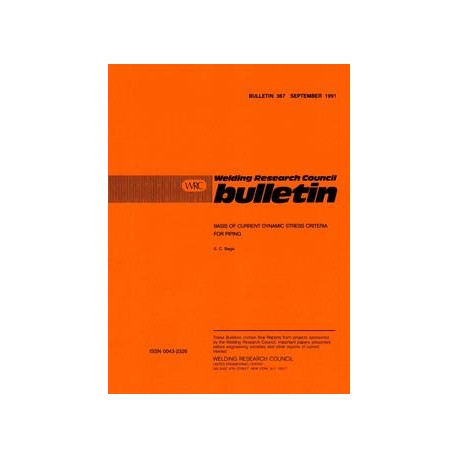Cart
0
Product
Products
(empty)
No products
To be determined
Shipping
$0.00
Total
Product successfully added to your shopping cart
Quantity
Total
There are 0 items in your cart.
There is 1 item in your cart.
Total products
Total shipping
To be determined
Total
 View larger
View larger
WRC 367
M00002477
New product
WRC 367 Basis Of Current Dynamic Stress Criteria For Piping
Bulletin / Circular by Welding Research Council, 1991
G. C. Slagis
In stock
More info

